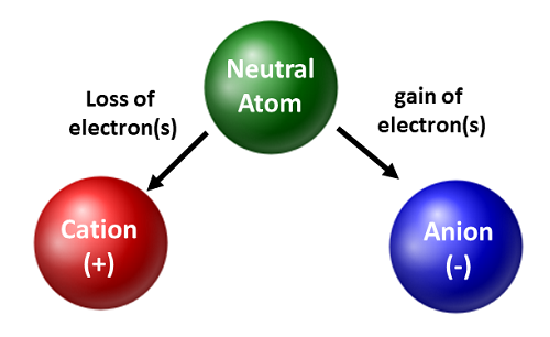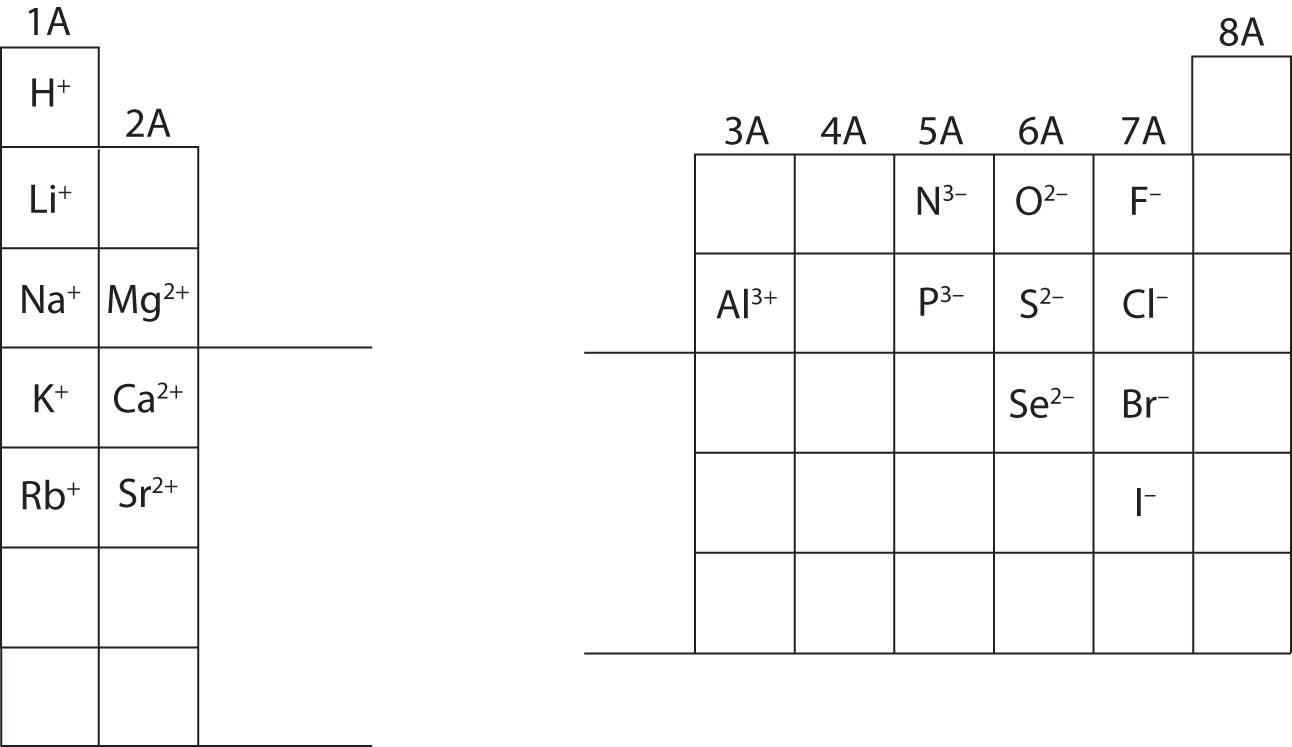What Is a Cation and Where Can You Find It on the Periodic Table
3.6: The Importance of Ions to a Chemist
-
- Last updated
- Save as PDF
- Page ID
- 85150
Chemists appreciate isotopes and use them in basic and applied research. However, they are more concerned with the movement of electrons. When an atom gains or loses electrons, it becomes a charged species or an ion. When this occurs, the nucleus is not altered. For atoms that lose electrons, an overall positive charge will result (#protons > #electrons). Atoms that form these types of ions are called cations. Metal atoms (located on the left side of the periodic table) always lose electrons to become cations.

Unlike metal atoms, nonmetals will gain electrons to become anions. These types of ions have an overall negative charge (#electrons > #protons). With the exception of the noble gases, all atoms on the periodic table will lose or gain electrons to achieve electronic stability. Different types of bonding occur when atoms lose, gain, or share electrons. These types of atomic connections will be further discussed in chapter 4 of your textbook.
Interactive: Building an Atom
Build an atom out of protons, neutrons, and electrons, and see how the element, charge, and mass change. Then play a game to test your ideas!
At this point, you should be able to calculate all subatomic particles when given a specific ion charge. In addition, you should master classifications of ions (recognizing cations are positive and anions are negative). Memorizing charges of specific ions will be required when working on chapter 4 in the textbook. For now, ion charges will be provided and should not be memorized. Note and appreciate the ion charges for main group elements in the periodic table below. Lastly, chemists do not write a number for charges involving the number one (1). For these species, you will only see a + or - sign. Charges of higher magnitude will always have a number associated with the elemental symbol.

Example \(\PageIndex{1}\): IOnic Classification
Calculate the subatomic particles for the species below using the information in Figure \(\PageIndex{2}\). Label each as being an atom, cation, or anion. Refer to the periodic table for masses, atomic numbers, and specific ion charges.
- Aluminum ion
- Zirconium atom
- Sulfur ion
Solutions
- There are 13 protons, 14 neutrons, and 10 electrons in the aluminum ion. This ion is positively charged which means it has lost electrons and forms a cation.
- There are 40 protons, 51 neutrons, and 40 electrons in the zirconium atom. This is an atom which has no overall charge.
- There are 16 protons, 16 neutrons, and 18 electrons in the sulfur ion. This ion is negatively charged which means it has gained electrons and forms and anion.
Example \(\PageIndex{2}\): A/Z and symbol mass notations
Write A/Z and symbol mass notations for the ions/atom in the previous question.
Solutions
- \(\ce{^{27}_{13}Al^{3+}}\) and Al-27
- \(\ce{^{91}_{40}Zr}\) and Zr-91
- \(\ce{^{32}_{16}S}^{2-}\) and S-32
If an atom gains or loses electrons, this should be represented on the A/Z format. The symbol-mass format does not display ion charge. Remember, neutrons and protons are not affected by changes of electrons.
Need More Practice?
- Turn to Section 3.E of this OER and work problems #5 and #9.
What Is a Cation and Where Can You Find It on the Periodic Table
Source: https://chem.libretexts.org/Courses/Furman_University/CHM101%3A_Chemistry_and_Global_Awareness_(Gordon)/03%3A_Atoms_and_the_Periodic_Table/3.06%3A_The_Importance_of_Ions_to_a_Chemist#:~:text=When%20an%20atom%20gains%20or,charged%20species%20or%20an%20ion.&text=Atoms%20that%20form%20these%20types,lose%20electrons%20to%20become%20cations.
0 Response to "What Is a Cation and Where Can You Find It on the Periodic Table"
Postar um comentário